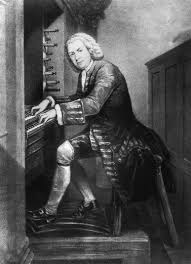
Born in Eisenach, Saxe-Eisenach in the year 1685, Johann Sebastian Bach began his music career by learning to play the harpsichord and the violin, which his father had taught him to play. His family was a musical family; his father was an organist at the church and his brothers and uncles were organists and composers as well. As a matter of fact, his uncle, Johann Christoph Bach was well known at the time for his musical talents. Bach’s family was quite successful in music and became well known for their talent.
At the age of 10, tragedy struck Bach’s immediate family when his mother, unfortunately, passed away and his father followed within a year. After the death of his parents, his older brother took him in and that’s where Bach continued to learn what he could from his older brother. It was also during this time that he learned to play the clavichord. 4 years after moving in with his brother, he earned the Choral scholarship, which allowed him to go to St. Michael’s school in Luneburg for 2 years. There, Johann Sebastian Bach learned more about playing musical instruments such as the organ and the harpsichord but also studied some theology, geography, other languages, history, and physics.
After 2 years at St. Michael’s school, he went to the chapel of Duke Johann Ernst in Weimar where he stayed for about 7 months as a court musician. During this time his reputation as an organist had begun to grow. Life continued to improve for him when he took the position of organist at a church in 1703, which gave him a higher salary and also gave him more time to develop his own creations. It was there that he started creating some of his own compositions, although he had much to learn about being a music composer.
He remained in this position for about 3 years before he decided that it was time to move on. In 1706, he was offered the position of an organist at the church of St. Blasius’, in Muhlhausen. Later, he married Maria Barbara and together they had seven children. Unfortunately, only 4 of the 7 children made it to adulthood. Maria Barbara passed away in 1720 and Bach remarried Anna Magdalena in 1721 and together they had 13 children. Sadly, only 6 of the 13 grew into adulthood.
As time went on, his reputation and career continued to grow. He accepted a few different positions including being the director of music for Prince Leopold of Anhalt-Cothen. It was there that he was able to grow and produce many works for organ and the keyboard instruments of the time, compile “The Well-Tempered Clavier”, the first book of his monumental and produce the exceptional Brandenburg Concertos.
He was eventually moved to Leipzig where he was appointed the Cantor of Thomasschule. All through his life, Bach learned all that he could about music. During the first five years, he produced a number of remarkable works, like the St John (1724) and St Matthew (1727) Passions, though he had limited resources.
During the final years of his life, his music began to develop and major works produced at this time include the Goldberg Variations, Variations for Organ on Vom Himmel Hoch, and the landmark “The Art of Fugue,” which although both unfinished, are great masterpieces. He lost his eyesight towards the end of his life, and eventually passed on in 1750. His legacy and contribution to the music world with all his work and his talented children can never be underestimated.
If you’re looking into Home Foundation Lifting and are in the Plano area call Plano Foundation Repair – their experienced team of professionals are ready to tackle your job!